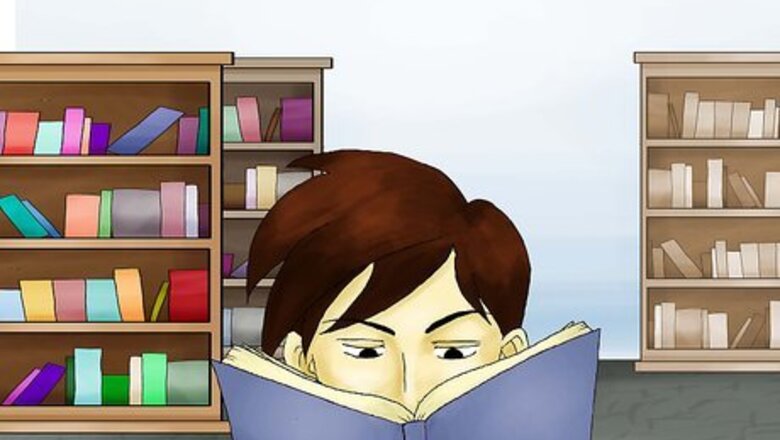
views
Learning About Dutch
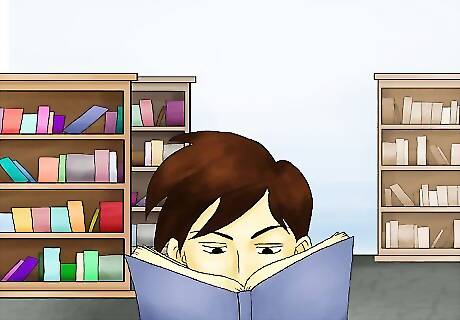
Understand how the Dutch language developed. Dutch is classified as a West Germanic language which is closely related to other languages in this branch, including German, English and West Frisian. The Dutch language originally developed from the Lower Franconian dialect of Low German. However modern Dutch has departed from its German origins in that it did not undergo the High German consonant shift and does not use the German umlaut as a grammatical marker. In addition, Dutch has more or less abandoned its original grammatical case system and has leveled a lot of its morphology. On the other hand, Dutch vocabulary is primarily Germanic in origin (although it contains more Romance loan words) and uses the same word order in sentences (SVO in main clauses and SOV in subordinate clauses).

Know where Dutch is spoken. Dutch is spoken as a first language by approximately 20 million people, mostly in the Netherlands and Belgium. It is spoken as a second language by approximately another 5 million. In addition to The Netherlands and Belgium, Dutch is also used in parts of Northern France, Germany, Suriname and Indonesia and is an official language on the Caribbean islands of The Netherland Antilles. The dialects of Dutch spoken in Belgium are known collectively as Flemish. Flemish differs from standard Dutch in several ways, including pronunciation, vocabulary and intonation. The language of Afrikaans -- which is spoken in South Africa and Namibia by approximately 10 million people -- is a descendant of Dutch and the two languages are considered mutually intelligible.
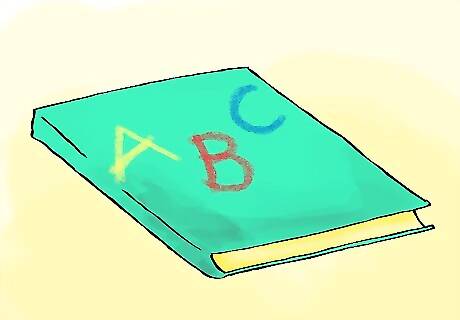
Start with the alphabet and pronunciation. When beginning to learn any language, the alphabet is a good place to start. A (ah) B (bay) C (say) D (day) E (ay) F (eff) G (khay) H (hah) I (ee) J (yay) K (kah) L (ell) M (emm) N (enn) O (oh) P (pay) Q (kew) R (air) S (ess) T (tay) U (ew) V (vay) W (way) X (eeks) Y (ee-grek or 'I') Z (zed). However, in terms of actual pronunciation, Dutch contains many sounds which are not used in English and can therefore be difficult to learn. The only letters which have the same pronunciation in Dutch as in English are the consonants s, f, h, b, d, z, l, m, n, ng. The letters p, t, and k are formed in the same way, but they are not aspirated (there is no puff of air when they are spoken). The best way to learn the pronunciation of some of the more unusual consonant and vowel sounds is to listen to them and repeat. The following overview is not exhaustive, but it will help you to get started: Vowels: a (pronounced like "ah" in "calm", but shorter), e (pronounced like "eh" in "bed"), i (pronounced like "ih" in "bit"), o (pronounced like "aw" in "paw", but with rounded lips), oe (pronounced like the "oo" in "too" but shorter), u (pronounced like the "u" in "upset", or "ir" in "dirt") and y (pronounced like the "i" in "pin" or "ee" in "deep", but shorter). Consonants: Some consonant sounds that are pronounced very differently in Dutch are ch, sch and g which all produce a guttural sound in the back of the throat (almost like the "ch" in the Scottish word "loch"). The Dutch r can be rolled or guttural, while the j is pronounced like the "y" in "yes".
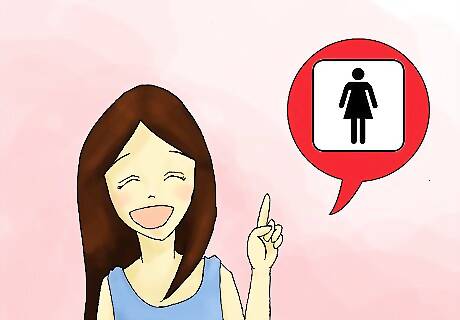
Understand Dutch noun genders. The Dutch language classifies all of its nouns into one of two genders -- common (de words) or neuter (het words). This is much less complicated than German , which has three. It can be difficult to guess which gender a word is based on how it looks. Therefore, it's better to just memorize the gender of specific words as you learn them. The common gender is actually a combined form of the masculine and feminine genders, which are no longer used. As a result, about 2/3 of all nouns belong to the common gender. Therefore, a good technique is just to learn all of the neuter nouns. Then you can be confident that any of the nouns you haven't learned are most likely common. You can identify neuter nouns by learning a number of rules. For example, all diminutive nouns (which end in je) and all infinitives that are used as nouns are neuter. This is also true for words that end in -um, -aat, -sel and -isme, and for most words that start with ge-, be- and ver-. The words for colors, compass directions and metals are also always neuter.
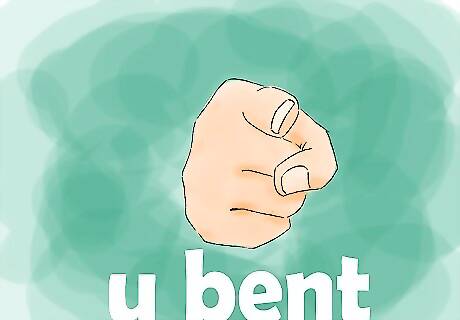
Learn some of the most common present tense verbs. As you progress on your journey towards learning Dutch, it is a good idea to memorize some of the most commonly used present tense verbs as they are necessary to start forming sentences. Zijn: Present tense of "to be", pronounced "zayn". Ik ben: I am (pronounced "ik ben") Jij/u bent: You are (pronounced "yay / ew bent") Hij/zij / het is: He/she/it is (pronounced "hay/zay/ut is) Wij zijn: We are (pronounced "vay zayn") Jullie zijn: You are (pronounced "yew-lee zayn") Zij zijn: They are (pronounced "zay zayn") Hebben: Present tense of "to have", pronounced "heh-buhn". Ik heb: I have (pronounced "ik hep") Jij/u hebt: You have (pronounced "yay/ew hept") Hij/zij/het heeft: He/she/it has (pronounced "hay/zay/ut hayft") Wij hebben: We have (pronounced "vay heh-buhn) Jullie hebben: You have (pronounced "yew-lee heh-buhn") Zij hebben: They have (pronounced "zay heh-buhn")
Learning Basic Words and Phrases
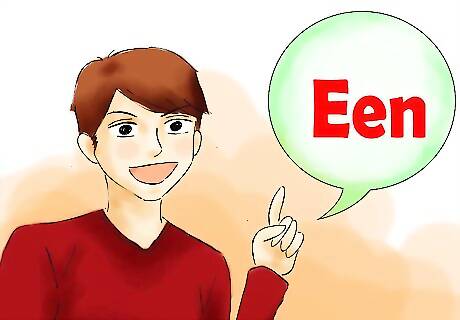
Learn how to count. Counting is an important skill in any language, so start by learning the numbers one through twenty in Dutch. Een: One (pronounced "ain") Twee: Two (pronounced "tway") Drie: Three (pronounced "dree") Vier: Four (pronounced "veer") Vijf: Five (pronounced "vayf") Zes: Six (pronounced "zehs") Zeven: Seven (pronounced "zay-vuhn") Acht: Eight (pronounced "ahgt") Negen: Nine (pronounced "nay-guhn") Tien: Ten (pronounced "teen") Elf: Eleven ( pronounced "elf") Twaalf: Twelve (pronounced "twahlf") Dertien: Thirteen (pronounced "dehr-teen") Veertien: Fourteen (pronounced "vayr-teen") Vijftien: Fifteen (pronounced "vayf-teen") Zestien: Sixteen (pronounced "zehs-teen") Zeventien: Seventeen (pronounced "zay-vuhn-teen") Achttien: Eighteen (pronounced "ahgt-teen") Negentien: Nineteen (pronounced "nay-guhn-teen") Twintig: Twenty (pronounced "twin-tuhg")
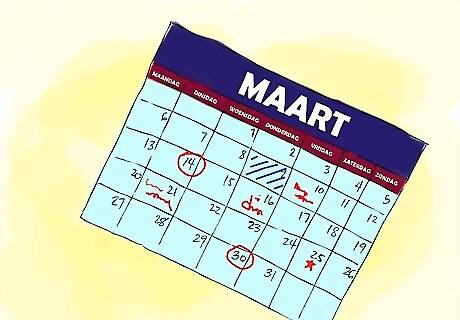
Learn the days of the week and the months of the year. Some more useful vocabulary to get you started includes the days of the week and months of the year. Days of the week: Monday = Maandag (pronounced "mahn-dahg") Tuesday = Dinsdag (pronounced "dinss-dahg") Wednesday = Woensdag (pronounced "woons-dahg") Thursday = Donderdag (pronounced "don-duhr-dahg") Friday = Vrijdag (pronounced "vray-dahg") Saturday = Zaterdag (pronounced "zah-tuhr-dahg") Sunday = Zondag (pronounced "zon-dahg") Months of the year: January = Januari (pronounced "jahn-uu-ar-ree"), February = Februari (pronounced "fay-bruu-ah-ree"), March = Maart (pronounced "mahrt"), April = April (pronounced "ah-pril"), May = Mei (pronounced "may"), June = Juni (pronounced "yuu-nee"), July = Juli (pronounced "yuu-lee"), August = Augustus (pronounced "ow-ghus-tus"), September = September (pronounced "sep-tem-buhr"), October = Oktober (pronounced "ock-tow-buhr"), November = November (pronounced "no-vem-buhr"), December = December (pronounced "day-sem-buhr").

Learn the colors. Learning the Dutch words for the different colors is a good way to build up your descriptive vocabulary. Red = rood (pronounced "rowt") Orange = oranje (pronounced "oh-rahn-yuh") Yellow = geel (pronounced "ghayl") Green = groen (pronounced "ghroon") Blue = blauw (pronounced "blaw") Purple = paars (pronounced "pahrs") or purper (pronounced "puhr-puhr") Pink = roze (pronounced "row-zah") White = wit (pronounced "whit") Black = zwart (pronounced "zwahrt") Brown = bruin (pronounced "bruyn") Grey = grijs (pronounced "greys") Silver = zilver (pronounced "zil-fer") Gold = goud (pronounced "howt")
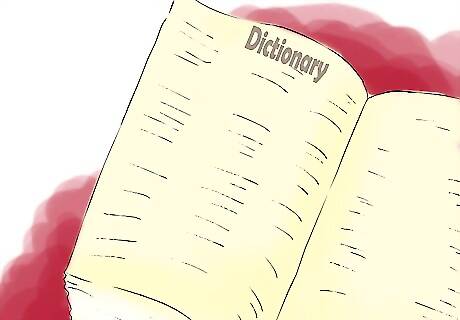
Learn some useful words. Adding a few key words to your vocabulary can make a huge difference to your Dutch conversation skills. Hello = Hallo (pronounced "hah-low") Goodbye = Tot ziens (pronounced "toht seens") Please = Alstublieft (pronounced "ahl-stuu-bleeft") Thank you = Dank u wel (formal, pronounced "dahnk-ew-vehl") or dank je wel (informal, pronounced "dahnk-yuh-vehl") Yes = Ja (pronounced "yah") No = Nee (pronounced "nay") Help = Help (pronounced "hehlp") Now = Nu (pronounced "nuu") Later = Later (pronounced "lah-tuhr") Today = Vandaag (pronounced "vahn-dahg") Tomorrow = Morgen (pronounced "more-ghun") Left = Links (pronounced "links") Right = Rechts (pronounced "reghts") Straight ahead = Rechtdoor (pronounced "regh-dore")
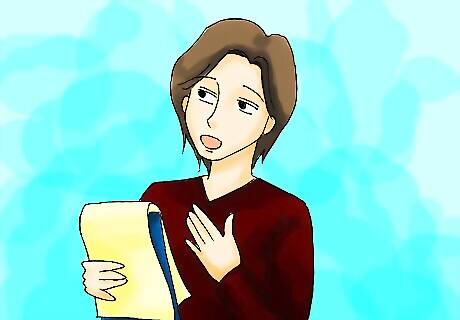
Learn some useful phrases. Next it's time to move on to to some useful, everyday phrases which will help you to navigate basic social interactions. How are you? = Hoe maakt u het? (formal, pronounced "hoo mahkt uu hut") or Hoe gaat het? (informal, pronounced "hoo gaht hut?") Fine, thank you = Goed, dank u (formal, pronounced "goot dahnk uu") or Goed, dank je (pronounced "goot dahnk yuh") Nice to meet you = Aangenaam kennis te maken (pronounced "ahn-guh-nahm keh-nis tuh mah-kun") I can't speak Dutch well = Ik spreek niet goed Nederlands (pronounced "ick sprayk neet goot nay-dur-lahnts) Do you speak English? = Spreekt u Engels? (pronounced "spraykt uu eng-uls") I don't understand = Ik begrijp het niet (pronounced "ick buh-grayp hut neet") You are welcome = Graag gedaan (pronounced "grahg guh-dahn") How much does this cost? = Hoeveel kost dit? (pronounced "hoo-vale kost dit")
Gaining Fluency
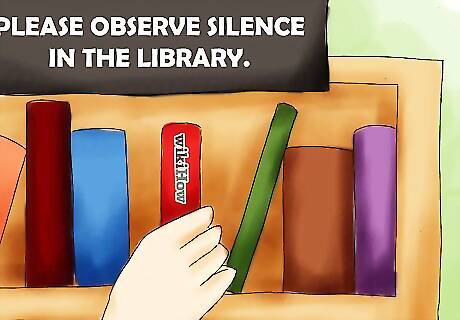
Obtain Dutch language learning materials. Check out your local library or book store or shop online to see what's out there. Several language publishing companies such as Assimil, Berlitz, Teach Yourself, Hugo, Pimsleur, Michael Thomas, Rosetta Stone, and Lonely Planet have an array of books, audio materials, and computer programs in English on Dutch. You will also want to find yourself a good bilingual dictionary---one of the best for Dutch is published by Van Dale and available in a range of language combinations: Dutch-English, Dutch-French, Dutch-Spanish, etc. As you advance, you will want to slowly cultivate a Dutch-language library filled with children's books (to start), word puzzle books, non-fiction books, novels, poetry anthologies, and magazines etc. Reading is an invaluable tool to building your language skills as well as exposing yourself to very natural Dutch. When you reach this point, you should also obtain a monolingual Dutch-Dutch dictionary and thesaurus.
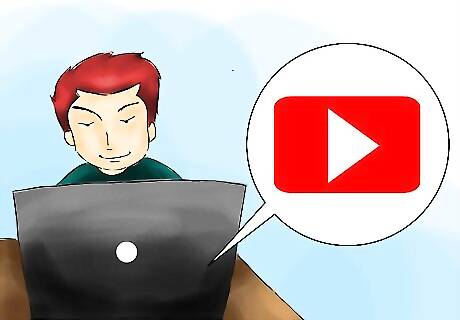
Listen to as much Dutch as possible. This may be a bit challenging if you don't know Dutch people or live in a Dutch-speaking country, however you can start with YouTube and other audio materials and work your way into eavesdropping on Dutch conversations. It is important to get a feel for the language---hear how it sounds, how it works, how it flows.
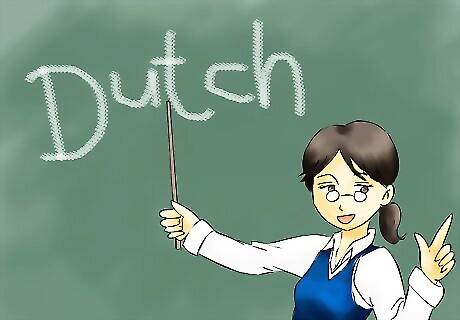
Enroll in a Dutch course or hire a Dutch tutor. If where you live has a Dutch or Belgian cultural center and/or has a community of Dutch speakers, ask around and inquire about what's available in terms of language classes or private tutors. Proper lessons with native speakers can provide you with a better sense of the language as well as teach you elements of culture that books alone can't.
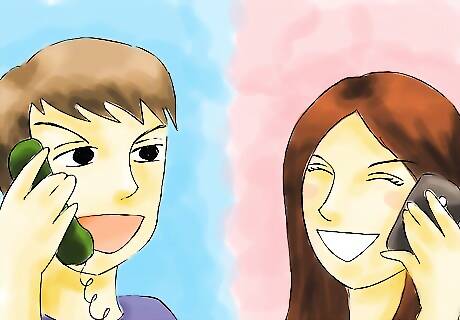
Speak Dutch with Dutch-speaking people. Practice makes perfect. Don't be afraid if you make mistakes, that's how you learn. If a Dutch speaker replies back to you in English, keep on speaking Dutch. Start with a handful of words and work your way up, bit by bit. To get yourself to function in Dutch, start by changing your computer and social media (Twitter, Facebook, etc.) interface settings to Dutch/Nederlands. You have to surround yourself in the language in order to think in the language.

Travel to a Dutch-speaking country and immerse yourself. Dutch is not as widely spoken or studied a language as say German, Japanese, or Spanish, so it may be difficult to hone your language skills without travelling to a Dutch-speaking country. Both the Netherlands and Flanders offer cultural exchange programs and intensive Dutch-language programs for foreigners through universities, schools, and private institutions.

Keep an open mind. The best way to absorb a language and culture is to open all of your senses to it. In order to speak Dutch, you have to think Dutch and be Dutch. At the same time, don't let stereotypes you've learned about Dutch speakers rule over your expectations, impressions, and mindset when you travel to a Dutch-speaking country. Things are not just tulips, marijuana, wooden clogs, cheese, bicycles, Van Gogh, and liberalism.




















Comments
0 comment